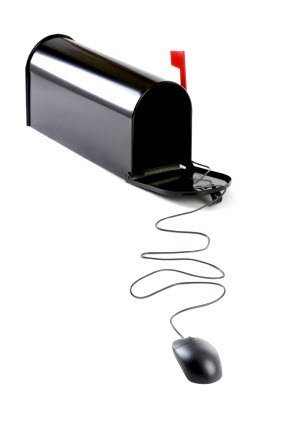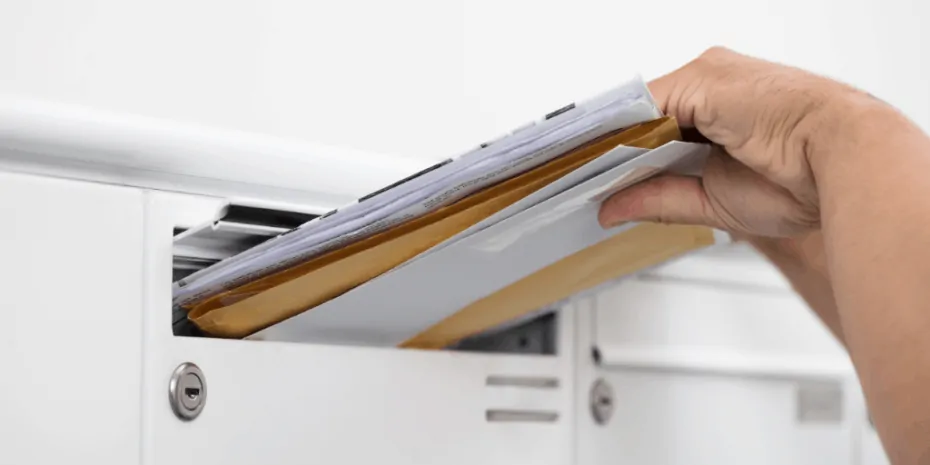REtipster features products and services we find useful. If you buy something through the links below, we may receive a referral fee, which helps support our work. Learn more.
Get Your Discounts! ITI Direct Mail | Rocket Print & Mail | REIPrintMail
After you've pulled your list and sorted it, the next step is to send the mail.
If you’ve ever assembled a bulk mail campaign in-house, you know it isn’t fun.
It involves many monotonous tasks, including:
- Printing hundreds of letters or postcards at home.
- Signing each letter by hand.
- Stuffing envelopes until your fingers bleed.
- Licking stamps until your tongue falls off.
Don't believe me? Try it yourself, and you'll see what I mean after a few hundred envelopes!
Luckily, there is a MUCH better way to get this job done.
Many direct mail services will print, stuff, stamp, and send your mail on your behalf. They are equipped to do it much faster and for much less money than you can.
I've used several of these services over the years, and a few have stood out to me as the best for real estate investors. However, they each bring something a little different to the table.
Depending on your need for guidance, how much you care about getting the lowest possible price, and how much human interaction you want, there are a few different options I recommend (in no particular order):
…and you can get BIG discounts if you sign up with any of them using the links above.
Oursourcing and Automation

These direct mail services will allow you to upload a pre-sorted list, upload your message (whether you're using a postcard or letter), and send out your bulk mail campaigns with ZERO production work required.
Not only will this save you DAYS of wasted time, but the postage rates and production costs will be significantly less expensive because these companies buy all their material in bulk, and with their economies of scale, they can offer us discounted pricing that we could never get on our own. The cost of production and postage through any of these services is a fraction of what you'll pay if you try to do all of this in-house.
When you're mailing hundreds or thousands of units at a time, this kind of savings is HUGE.
Working with ITI Direct Mail
This video will show you how to upload your list and send your mail using ITI Direct Mail. Before you go too far, don't forget to pre-pay for your credits through this link to get the best pricing.
In this example, I'm doing a mail merge, which is required if you send out blind offers.
Working with Rocket Print & Mail
If you're interested in working with Rocket Print, here's a quick overview of how that works.
Again, you can access special pricing if you sign up using the REtipster affiliate link. Be sure to mention that you're coming from the REtipster Community to get signed up at the right rates.
Working with REIPrintMail
I think REIPrintMail provides a solid value for many new land investors because of how much guidance they can provide. They offer some of the most unique mail pieces I’ve seen, which can help you stand out from the crowd and get your mail opened. You’ll also get free access to a personalized direct mail coach, so you can be confident you’re sending out the most effective type and quantity of mail in each area (which is huge)!
You can even get a 10% discount on your first order when you sign up through our affiliate link!
Understanding the Process
The first time I ordered a direct mail campaign, I had no idea what I was doing. Luckily, these companies all make it relatively easy to get the job done (and I've found that the more expensive companies give better customer service).
It takes some time to get everything set up and established the first time you work with the company of your choice, but once you've figured out your mail piece, it's very quick and easy to set up and send out your future campaigns.
With most of my mailings, my recipients receive their mail about two weeks after I place the order when I use standard pre-sort postage. When I use first-class postage, they'll receive it about one week after I place the order. The time can be faster or slower depending on the size of your order and the geographic location of your recipients.
Response Rates
What kind of response rate should you expect from a mail campaign? What's considered “good enough” to measure success?
First and foremost, your response rate will depend almost entirely on:
- What kind of list you're using,
- Where you got your list from, and
- How well you've filtered your recipients
The whole idea behind sorting your list is to get the wrong people OFF your list, so you're only sending mail to those most likely to need what you're offering while also fitting into the mold of the properties you're looking to buy.
If you're not sending mail to the right people, your response rate will not be good, regardless of your message.
In my experience, when sending out mail to a delinquent tax list, my response rate can be anywhere from 1% to 5%, but those results are the exception, not the rule.
When sending mail to a list I pulled from a data service (like DataTree or PropStream), my response rate will be much lower. Regarding actual accepted offers, 0.1% is usually the minimum I'm looking for (that's 1 – 2 accepted offers for every 1,000 units I send out). Sometimes, it will be higher, but I know something has to be tweaked if it dips below that.
The response rates on blind offers sent to a list from a data service tend to be lower because when I pull lists this way, it's easy to sort recipients based on the property type, but it's a bit more difficult to sort them based on their level of motivation.
The upside of pulling lists from a data service is that the process is much easier and streamlined. The downside is that it's a bit harder to narrow down the list based on the pain points of delinquent taxes and other issues that motivate sellers.
Response Rate vs. Acceptance Rate
While the response rate is one way to measure the effectiveness of a direct mail campaign, for our purposes, what REALLY matters is the acceptance rate (not just the people who felt compelled to call, email, or visit our website, but the people who actually said “Yes!” to our offers).
The response rate and acceptance rate are two completely different things. At the end of the day, the acceptance rate is what matters.
Getting Over The First Big Hurdle
One of the biggest first hurdles to overcome with direct mail marketing is finding the markets that will work for you, tweaking your lists the right way, and sending out an effective mail piece that will get the desired results.
It doesn't always happen on the first try, and results are never guaranteed.
I've had my share of ” bombed campaigns,” and I won't lie; it's discouraging, but this is no reason to give up. A poor response or acceptance rate doesn't mean direct mail doesn't work. It means the variables haven't been dialed in just right, and something (perhaps a few things) needs to be revised before trying again.
It isn't easy to pinpoint why some campaigns do better than others. But here are some of the most common problem areas I've encountered:
- The quality of the list (what kinds of recipients are you mailing to?)
- The age of the list (are you working with old information?)
- Failing to target the most appropriate recipients (are you narrowing your list down enough?)
- A weak message on the mailer (what exactly are you saying to your recipients?)
- No immediate call to action (are you telling your recipients what to do? who to call? which website to visit? and WHY?)
- Failing to give recipients multiple ways of contacting you (phone, website, email, etc.)
- One of the contact methods is broken (the website form doesn't work, the phone number is set up wrong, the email address isn't deliverable, etc).
Keep track of all the variables that go into your campaigns because if an acceptable result isn't coming back on your first try, you can refer back to what you did and start zeroing in on what you shouldn't be doing again.
The most effective direct mail marketers understand how to target their recipients well and deliver a message that elicits a response.
It's not always a slam-dunk process, but you can take some easy steps to ensure you've sufficiently covered every angle of this process.
RELATED: How I Find Motivated Sellers (and Get Them Calling Me). Step 1: Getting the List
RELATED: How I Find Motivated Sellers (and Get Them Calling Me). Step 2: Sorting the List











